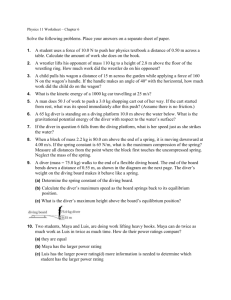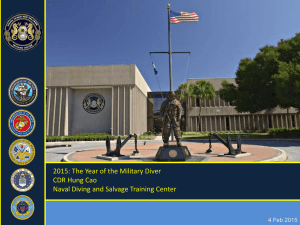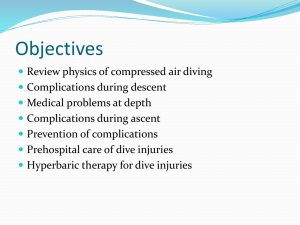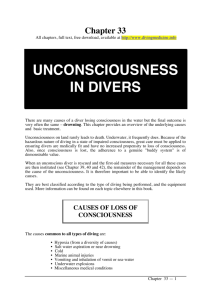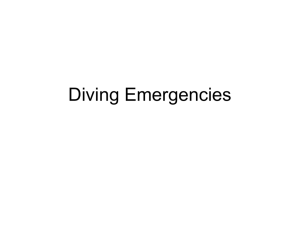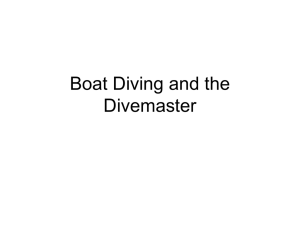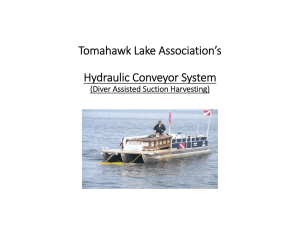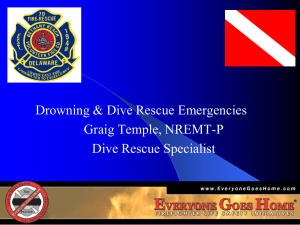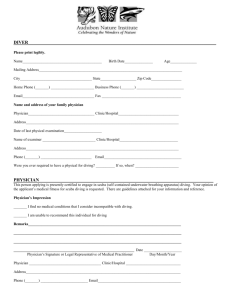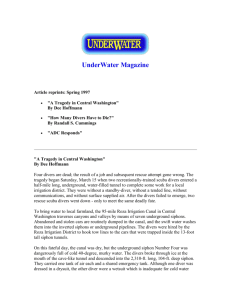Blue Water Diving
advertisement
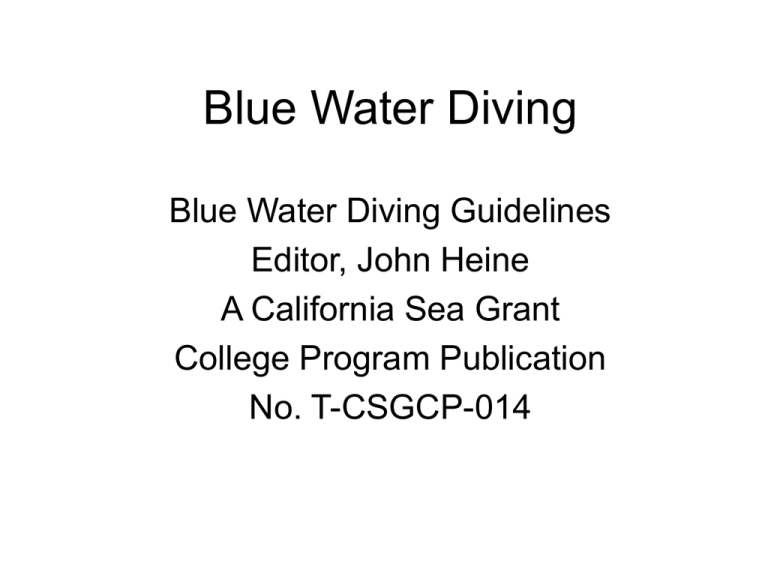
Blue Water Diving Blue Water Diving Guidelines Editor, John Heine A California Sea Grant College Program Publication No. T-CSGCP-014 Purpose • The purpose of this discussion is to introduce you to the basic procedures and concerns of blue water diving. Learning Objectives • Describe conditions in which blue water diving takes place. • Discuss general procedures and concerns for blue water diving activities. • Describe a blue water diving rig. Main Points • Definition of Blue Water Diving • Extension of the buddy system • Depth control in an environment with no reference points • Surface platforms • Task distribution • Management of scientific equipment • Emergency procedures Definition • Blue water Diving is a specialized diving activity often conducted in clear water with no functional bottom and no reference points for determining depth. Extension of the buddy system • Single “Safety Diver” – Responsible for the overall safe execution of the dive – Communicates with working divers via safety tethers attached to a “Ring” or “trapeze” – Visibility issues – Pre-arranged signals Controlling Depth • Importance – Safety – Working at desired depth in the water column • Reference Point – Down Line • Attached to the boat • Depths marked at regular intervals • “Trapeze” or “Ring” attached at appropriate depth Controlling Depth • Management Issues – Wind • Moves the boat and drags the down line – Waves/Swells • Jerks the line up and down Surface Platforms • Size of vessel – Large boats • Windage issues • Maneuverability issues – Small boats • Inadequate space to accommodate divers and gear • Safety Gear • Boat operator qualifications – Helpful if the operator is a diver Divisions of Tasks • Safety Diver – – – – – Responsible for the continuation of the dive Monitor depth and condition each of the divers Monitor and manage tethers Scan water for hazards Monitor environmental conditions • Working divers – – – – – – 4-5 maximum (condition dependent) Perform scientific tasks Scan water as scientific task permits Monitor self Monitor other divers as scientific task permits Terminate dive if it becomes unsafe Equipment Management • Individual flotation devices for each item • Neutrally buoyant at working depth • Attached to same down line as divers – Attached as the down line is deployed – Attached above the safety diver and trapeze – Avoids entanglement issues • Separate down line for gear Emergency Management • Communication protocols set in advance • Strategies for – Predators • Safety diver recalls the group to the down line • Group ascends together facing outward – Weather – Diver Accidents – Equipment issues Diving Procedures • Will vary based on environmental conditions and scientific objectives • Entry into the water – Divers gear up in the boat, attach the safety tether and drop the safety line overboard behind them – Divers enter the water & swim to the surface buoy – Boat operator keeps the surface line slack Diving Procedures • Descent – Divers descend as a group to a depth of approx. 10 feet, and clip into the tether lines on the Trapeze/Ring – Divers descend as a group to the working depth – Safety diver attaches the trapeze to the down line and clips in to the trapeze – Divers go to work Diving Procedures • Dive termination – May go up in pairs or as a group – Release the diver safety line and ascend the down line – Divers regroup at the surface float – Divers exit the water Summary (Finally) • Blue water diving is a specialized activity that requires meticulous planning, strong dive skills and teamwork. • Pre-Dive planning must include (at a minimum) – Extension of the buddy system – Depth control in an environment with no reference points – Surface platforms – Mission protocols and task distribution – Management of scientific equipment – Emergency procedures – Diving procedures

